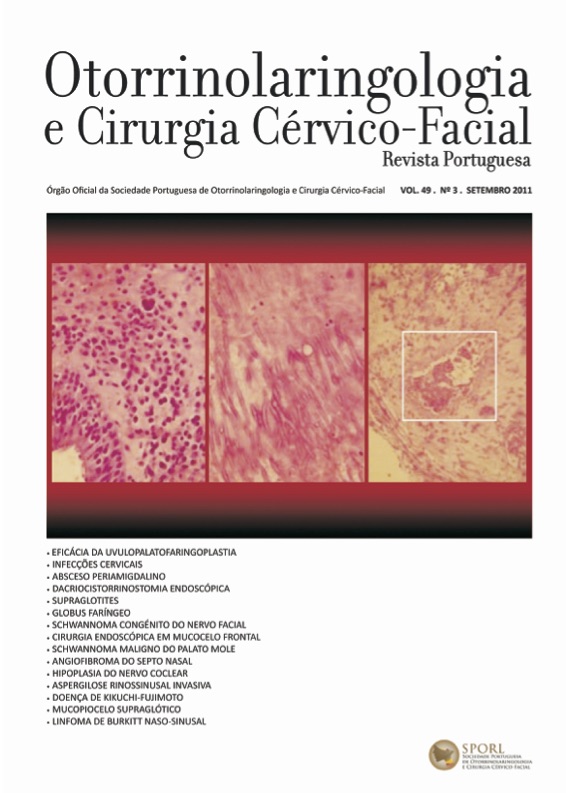Deep neck infections – Survey from an ENT department
DOI:
https://doi.org/10.34631/sporl.172Keywords:
deep neck cervical infections, morbidity, mortality, imunodepression, co-morbidity, tonsillar and pharyngeal pathology, complications, mediastinitisAbstract
Given the complexity, deep location and significant morbidity of deep neck space infections, their diagnosis and treatment remain an important medico-surgical challenge. As these infections are frequently caused by tonsillar and pharyngeal infections, Otolaryngologists are often called to lead with difficult problems.
Aiming to analyze deep neck space infections occurred during the last five years in Hospital de São José’s Department of Otolaryngology, we present a retrospective study of patients followed for this pathology since January 2004.
High prevalence of tonsillar infections was confirmed, with low morbidity in cases where adequate treatment was provided. The most serious complication was necrotizing mediastinitis, rare but with significant mortality, most of the time in patients with underlying systemic diseases.
High prevalence of oro-pharyngeal pathology as a common etiology of these infections should alert Otolaryngologists to carefully supervise their clinical evolution. Prompt diagnosis and rapid medico-surgical therapy are essential to assure a better prognosis.
Downloads
References
Murray AD, Marcincuk AC. Deep neck infections. 2009. www.emedecine.pt. Acedido em Abril 1, 2010.
Jennings CR. Surgical anatomy of the neck. Em: Valery J Lund (Ed.) Scott-Brown’s Otorhinolaryngology, Head & Neck Surgery, 7th ed, London, Hodder Arnold. 2008; 2(137):1739-1753.
Boscolo-Rizzo P, Marchiori C, Montolli F, Vaglia A et al. Deep neck infections: a constant challenge. J Otorhinolaryngol 2006 May; 68(5): 259-265.
Eftekharian A, Roozbahany NA, Vaezeafshar R, Narimani N. Deep neck infections: a retrospective review of 112 cases. Eur Arch Otorhinolaryngol. 2009 Feb; 266(2):273-277.
Suehara AB, Gonçalves AJ, Alcadipant FA, Kavabata NK et al. Infecções cervicais profundas: análise de 80 casos. Rev Bras Otorrinolaringol 2008 Abr; 74(2):253-259.






